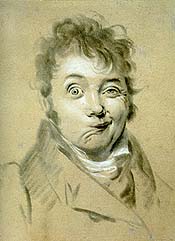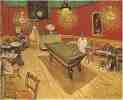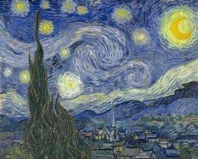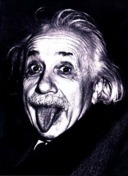

Examples:
Leonardo da Vinci, Mona Lisa (La Joconde) (1479 - d. before 1550), c. 1503-1506, oil on wood panel, 77 x 53 cm, Louvre. This most famous of paintings is important for many reasons, not least of which is the subject's mysterious expression. Contibuting to this effect is Leonardo's use of sfumato, which seems to suggest that we are observing this face as its expression is changing. This portrait also presents early examples of aerial perspective and landscape painting. See Renaissance.

Charles Lebrun (French, 1619-1690), Expressions of the Spirit's Passions,
c. 1663, engraving?. See
Baroque
and Poussinisme.

![]()

Franz Xaver Messerschmidt (German, 1736-1783), The Beaked, 1770, alabaster bust, height 43 cm, Austrian State Gallery, Vienna. Profile view. Many of Messerschmidt's
 sixty-nine nearly life-size "character heads" bear very strong facial expressions -- grimaces or smiles, outstretched tongues, widely opened mouths,
sixty-nine nearly life-size "character heads" bear very strong facial expressions -- grimaces or smiles, outstretched tongues, widely opened mouths, upraised brows, etc., each appearing to demonstrate an extreme use of facial muscles. Their creation was at least partly a reflection of the scientific interest in facial expressions in vogue in Europe at the time.
![]()

Franz Xaver Messerschmidt, Ill-Humored Man, 1778, lead bust, Louvre. This bust was purchased by the Louvre in 2005 for $4.8 million.

Francisco de Goya y Lucientes (Spanish, 1746-1828), The Forge, between c. 1815 and 1820,
oil on canvas,
71 1/2 x 49 1/4 inches (181.6 x 125.1 cm), Frick Collection,
NY.

Francisco
de Goya y Lucientes, Saturn Devouring one of his Sons, mural transferred to canvas,
(146 x 83 cm), Prado Museum, Madrid. Also see grotesque
and Romanticism.
![]()

Léopold Boilly (French, 1761-1845),
Grimacing Man (Self-Portrait), c. 1822-23, conté
crayons on paper. This is an
example of an expressive work in a very literal way! See caricature,
Neoclassicism,
and self-portrait.

Vincent van Gogh (Dutch, 1853-1890), The Night Café, September 1888
(Arles), oil on canvas,
27 1/2 x 39 inches (70 x 89 cm), Yale University Art Gallery,
F 463. Of his Night Café, van Gogh said: "I
have tried to express with red and green the terrible passions
of human nature." Also see Post-Impressionism.
![]()

Vincent van Gogh (Dutch, 1853-1890), The Starry Night, June 1889 (Saint Rémy),
oil on canvas,
29 x 36 1/4 inches (72 x 92 cm), Museum of Modern Art, New York,
F 612. See nocturne.

Walter Richard Sickert (English, 1860-1942),
Ennui, c. 1914, oil
on canvas, 152.4 x 112.4
cm, Tate Gallery, London. See English
art and ennui.
![]()

Edvard Munch (Norwegian, 1863-1944), The Sick Child, 1907, oil
on canvas, 118.7 x 121.0
cm, Tate Gallery, London.
Charles Burchfield (American, 1893-1967), Orion in December, 1959, watercolor and pencil on paper,39 7/8 x 32 7/8 inches (101.2 x 83.4 cm), National Museum of American Art, Washington, DC.

Chaïm Soutine (Russian-French, 1893-1943), The Bellhop, 1928, oil
on canvas, 98 x 80.5 cm,
Georges Pompidou Center, Paris. See Jewish
art.
![]()

American, Albert
Einstein, photograph.

Francis Bacon, Three Figures in a Room, 1964, oil
on canvas, 198 x 441 cm,
Georges Pompidou Center, Paris. See triptych.
![]()

Francis Bacon, Portrait of Michel Leiris, 1976, oil on canvas,
34 x 29 cm, Georges Pompidou Center, Paris.

Francis Bacon, Study of the Human Body, 1981-1982, oil and pastel on canvas,
198 x 147.5 cm, Georges Pompidou Center, Paris.
Also see Expressionism (with an uppercase E — an art movement dominant in Germany from 1905-1925, especially Die Brücke and Der Blaue Reiter, which are usually referred to as German Expressionism, anticipated by Francisco de Goya y Lucientes, Vincent van Gogh, Paul Gauguin and others), caricature, frisson, grotesque, and obsession.
https://inform.quest/_art
Copyright © 1996-![]()